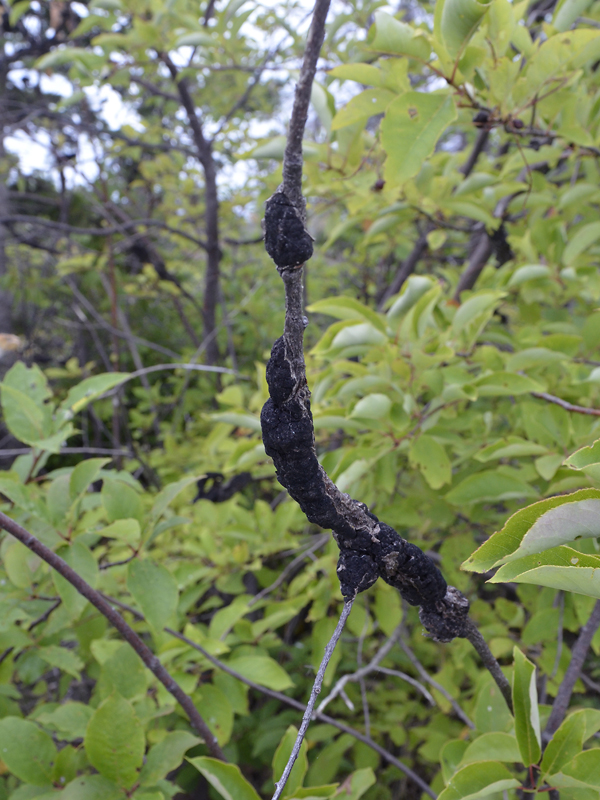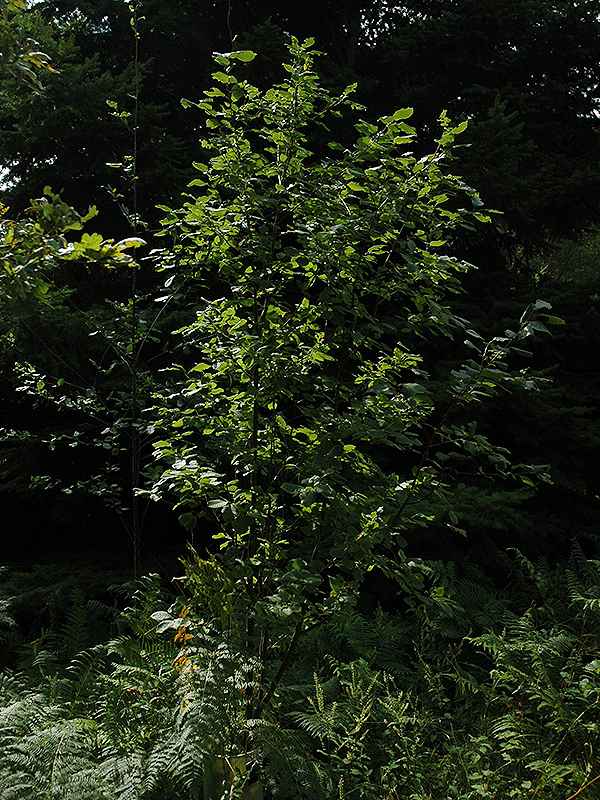
Woody > Prunus > Prunus virginiana > Prunus virginiana
Prunus virginiana
Chokecherry
Origin: European settlers adopted the use of chokecherries in some areas, particularly the northern plains. In such localities they have been traditionally used for jam, jelly, wine, and syrup.
Mike's
Opinion


"
The Chokecherry is a very important shrub for providing watershed protection, and as a significant wildlife food plant. It is also easily adapted for many uses, around homes, offices, and recreational areas, making it a very diverse shrub.
Michael Pascoe, NDP., ODH., CLT., MSc. (Plant Conservation)
"
| Family |
| Rosaceae |
| Genus |
| Prunus |
| Species |
| virginiana |
| Category |
| Woody |
| Type |
| Shrub (deciduous) |
| Pronunciation |
| USDA Hardiness Zone |
| 2 - 7 |
| Canadian Hardiness Zone |
| 0a - 6b |
| RHS Hardiness Zone |
| H5 - H7 |
| Temperature (°C) |
| -46 - (-15) |
| Temperature (°F) |
| -50 - 5 |
| Height |
| 6 - 10 m |
| Spread |
| 4 - 6 m |
Photographs
Description and Growing Information
Flowering Period
| General Description |
| This plant is a large shrub or small tree, usually found growing in small clusters. Typical size for fruiting bushes is one to three inches in diameter and eight to fifteen feet tall. Chokecherry bushes are completely absent of thorns. |
| Landscape |
| Chokecherry is widely regarded as an important wildlife food plant and provides habitat, watershed protection, and species diversity. This plant is well adapted for use around homes, office buildings, and recreational areas. |
| Cultivation |
| Place seeds during the autumn in drill rows 50 cm apart. Cover the drill with 1.5 cm of soil. Plant in well drained soils, in sunny locations. |
| Shape |
| Oval or rounded small shrub. A very large, suckering, upright oval shrub if left to grow naturally. |
| Growth |
| Fast |
| ID Characteristic |
| A shrub or small tree, growing erect, 2-8 m, with horizontal branches, growing in dense thickets. |
| Pests |
| Diseases found on chokecherries include: chokecherry shot hole, powdery mildew, black knot, western X-disease. Common insect pests are the prairie tent caterpillar, eastern tent caterpillar and aphids. Plum Pox: Symptoms may be confused with other diseases/disorders such as nutrient deficiencies or pesticide injuries. PPV symptoms can occur on leaves, flowers and/or fruit. Faint yellow rings or lines may be found on the leaves. PPV generally does not cause plant mortality however, can reduce the plant productivity and longevity. How to Reduce the Spread and Impact of PPV: 1. Propagate vulnerable Prunus trees and shrubs outside of the affected area a. Isolation is important to protect clean plants from future spread of the disease. b. Propagating and growing vulnerable plants away from the virus-infected area reduce the likelihood of the disease spreading any further. This should be as far away from the quarantined area and any potential sources of the virus. 2. Propagate Prunus plants with virus-free Budwood and Rootstock from virus tested mother trees a. This eliminates the propagation link for viral diseases. 3. Inspect vulnerable Prunus for symptoms a. All Prunus shrubs and trees should be visually inspected for symptoms at lease twice per year and conducted by trained personnel familiar with the virus. b. Any plants found to be infected should not be moved or sold and must be reported to the Canadian Food Inspection Agency immediately. c. Inspections should not be conducted in periods of hot weather (temperatures over 30˚C). 4. Manage aphid vectors a. Aphids are extremely attracted to suckers (vegetative shoots at the base of the tree), these should be removed to avoid aphid colonization, feeding or migration. 5. Plant tolerant and resistant varieties a. When available, grow plum pox tolerant or resistant Prunus varieties. |
| Habitat |
| Widespread across northwestern Ontario's boreal region, north and west to the southern North West territories and northern British Columbia. |
| Bark/Stem Description |
| Thin, smooth, grey-brown, conspicuous lenticels that develop into shallow fissures, young stems have shallowly peeling, curling layers. |
| Flower/Leaf Bud Description |
| Buds are alternate, pale brown and pointed. Small 15-47 mm. |
| Leaf Description |
| Leaves are alternate, 3-5 cm long, broadly ovate and abruptly acuminate. The edges are sharply serrated, with the teeth usually pointed outward. The foliage is dull green above and lighter greyish green underneath. |
| Flower Description |
| The flowers are produced in racemes of 15-30 in late spring (well after leaf emergence). Flowers are white and in long, dense clusters. The fragrant flowers have 5 sepals, 5 petals, and many stamens. The flowers are about 1 cm across. |
| Fruit Description |
| Fruit is spherical, occasionally even with a pointed tip. They are dark purple to black when fully ripe. About 5-7 mm across. |
| Colour Description |
| During the autumn leaves are golden yellow to orange or reddish purple. Dense clusters of white flowers are followed by red fruit ripening to dark purple from August to September or June to August. |
| Texture Description |
| Glabrous except axillary tufts of hair. |
| Notable Specimens |
| Joany’s Woods, West Williams, Middlesex County, Ontario, Canada. |
| Propagation |
| Seed propagation works well and is relatively easy. By seed, following cool, moist stratification of 120-160 days. |

